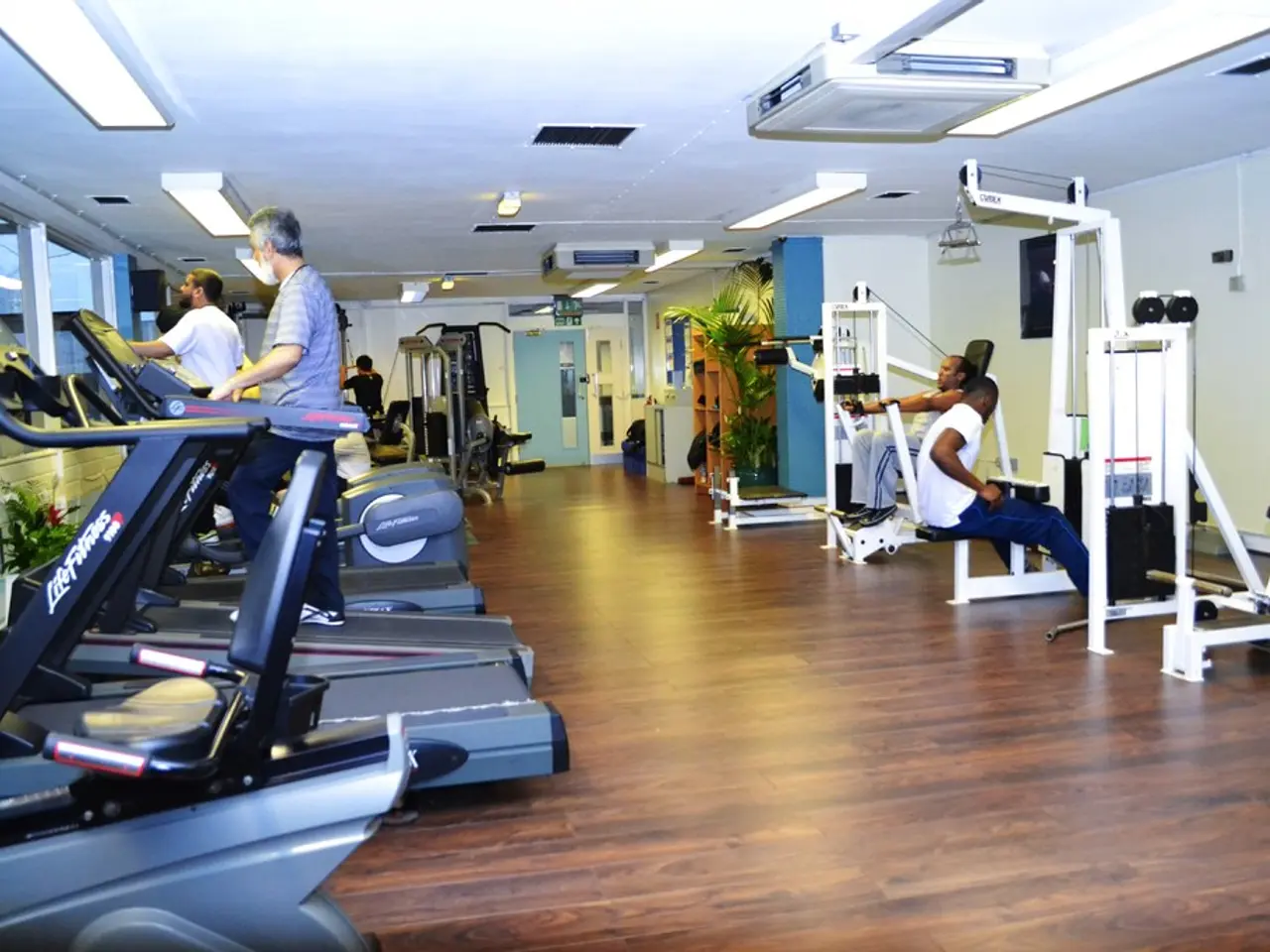Strategies for fortifying and improving pelvic floor muscle strength
Pelvic floor dysfunction is a common issue that affects approximately one in two women in the UK during their lives. While childbirth and pregnancy are often associated with pelvic floor problems, intense physical activity can also contribute to dysfunction.
The female pelvic floor is a complex structure that supports the bladder, bowel, and uterus, and maintains posture, continence, and core stability. However, when the pelvic floor muscles aren't strong enough to match the workload demanded of them, dysfunction can occur.
High-intensity exercise can increase intra-abdominal pressure, putting strain on the pelvic floor. For women who engage in high-intensity exercise, the rate of pelvic floor dysfunction increases to 63%.
To prevent pelvic floor dysfunction, maintaining a healthy weight and staying active is crucial. Regular pelvic floor exercises build strength and make the pelvic floor more resilient to strain from childbirth, ageing, or strenuous activity.
To perform basic pelvic floor contractions, imagine trying to stop yourself passing wind and squeezing the muscles around your back passage. Hold the contraction for a few seconds, then fully relax. Repeat. You can also imagine stopping the flow of urine mid-stream and engaging those muscles too.
A combination of relaxation/stretching, strengthening, and proper functional training forms the best prevention approach for pelvic floor dysfunction in women performing high-intensity exercise.
Pelvic floor muscle strengthening, or Kegel exercises, help improve muscle tone, bladder and bowel control, and sexual health. However, Kegels alone are often insufficient; women should learn proper activation and incorporate other exercises.
Pelvic floor stretching and relaxation are also important. Tight or hypertonic pelvic floor muscles can contribute to dysfunction and pain, so it is important to include pelvic floor stretches to relax and lengthen these muscles before strengthening them.
Core stability and posture training are essential in supporting the pelvic floor and reducing strain during high-intensity activities. Physiotherapists often incorporate core exercises that improve overall control and posture.
Physiotherapy or guided pelvic floor training can aid in muscle retraining, pain relief, and improving awareness and coordination of pelvic floor muscles. Biofeedback techniques can further enhance correct muscle activation patterns.
Education on proper breathing and voiding habits complements muscle training to prevent overloading the pelvic floor. Learning correct breathing and bladder habits is crucial for preventing pelvic floor dysfunction.
Low-impact exercise modifications and pelvic floor-friendly techniques can reduce stress on pelvic structures during workouts. Incorporating Pilates or similar low-impact exercises designed to tone the pelvic floor and core can be beneficial.
If you are experiencing symptoms such as leaking urine or faeces, a heavy sensation in the lower abdomen or vaginal area, painful sex, changes in bowel habits, or visible bulging in the vaginal area (a sign of prolapse), speak to your GP who may refer you to a women's health physiotherapist.
Help for pelvic floor dysfunction is available, and the condition is often preventable. By following these guidelines and taking care of your pelvic floor health, you can reduce your risk of pelvic floor dysfunction and maintain a healthy, active lifestyle.
[1] Hodges PW, Stewart W. The pelvic floor during exercise. Br J Sports Med. 2007;41(8):695-700. [2] Jain SK, et al. Pelvic floor muscle training in the prevention and treatment of pelvic floor dysfunction in women. Cochrane Database Syst Rev. 2015;(10):CD001493. [3] Richter HE, et al. Pelvic floor muscle training for the prevention and treatment of pelvic floor dysfunction in women. BMJ. 2015;350:h1914. [4] Richter HE, et al. Biofeedback for the prevention and treatment of pelvic floor dysfunction in women. Cochrane Database Syst Rev. 2015;(11):CD006133. [5] Richter HE, et al. Pelvic floor muscle training for the prevention and treatment of pelvic floor dysfunction in women: a systematic review. J Womens Health. 2015;24(11):877-888.
News about pelvic floor dysfunction, a common issue affecting many women, suggests that high-intensity exercise can contribute to it, increasing the rate to 63% for those regularly engaging in such activities. To prevent pelvic floor dysfunction, a combination of pelvic floor exercises, core stability training, posture training, relaxation and stretching exercises, and proper functional training are essential. According to research, pelvic floor muscle training (Kegel exercises) can help improve muscle tone, bladder and bowel control, and sexual health, but may not be sufficient on its own. Biofeedback techniques can further enhance correct muscle activation patterns, and educational resources about proper breathing and voiding habits are crucial. In case of symptoms such as leaking urine or faeces, a heavy sensation in the lower abdomen or vaginal area, painful sex, changes in bowel habits, or visible bulging in the vaginal area, seeking help from a women's health physiotherapist is advisable. Following these guidelines and taking care of pelvic floor health can help reduce the risk of pelvic floor dysfunction and maintain a healthy, active lifestyle. [References: 1, 2, 3, 4, 5]
This text discusses pelvic floor dysfunction and its prevention, highlighting the importance of various exercises, relaxation techniques, and proper habits to maintain pelvic floor health, prevent pelvic floor dysfunction, and improve overall health and wellness, including fitness-and-exercise and women's health.




